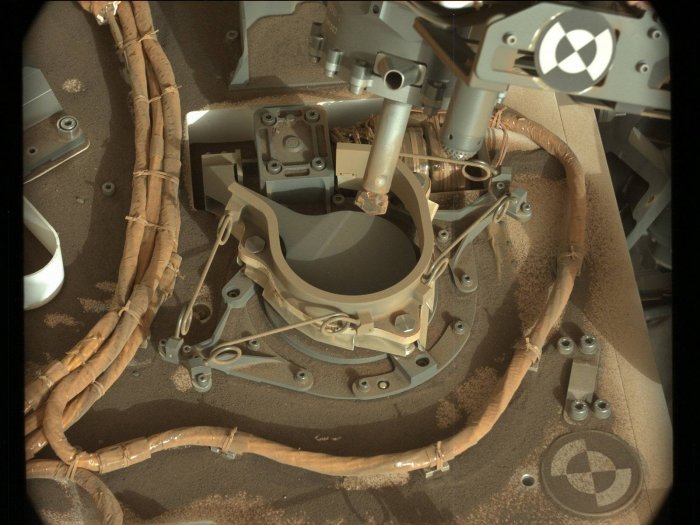MessageToEagle.com – Now, NASA’s Curiosity rover uses its onboard labs to analyze drilled samples on Mars – for the first time in more than a year.
“This was no small feat. It represents months and months of work by our team to pull this off,” said Jim Erickson, project manager of the Mars Science Laboratory mission, which is led by NASA’s Jet Propulsion Laboratory in Pasadena, California. The Curiosity rover is part of the MSL mission.

“JPL’s engineers had to improvise a new way for the rover to drill rocks on Mars after a mechanical problem took the drill offline in December 2016.”
The rover drilled its last scheduled rock sample in October 2016.
On May 20, a technique called “feed extended drilling” allowed Curiosity to drill its first rock sample since October 2016; on May 31, an additional technique called “feed extended sample transfer” successfully trickled rock powder into the rover for processing by its mineralogy laboratory. Delivery to its chemistry laboratory will follow in the week ahead.
Testing of both the new drilling method and sample delivery will continue to be refined as Curiosity’s engineers study their results from Mars. But this is a major milestone for the mission, said Ashwin Vasavada of JPL, the mission’s project scientist.
“The science team was confident that the engineers would deliver — so confident that we drove back to a site that we missed drilling before. The gambit paid off, and we now have a key sample we might have never gotten,” Vasavada said. “It’s quite remarkable to have a moment like this, five years into the mission. It means we can resume studying Mount Sharp, which Curiosity is climbing, with our full range of scientific tools.”
The new sample transfer technique allows Curiosity to position its drill over two small inlets on top of the rover’s deck, trickling in the appropriate amount of rock powder for the onboard laboratories to do their analyses.
This delivery method had already been successfully tested at JPL. But that’s here on Earth; on Mars, the thin, dry atmosphere provides very different conditions for powder falling out of the drill.
“On Mars we have to try and estimate visually whether this is working, just by looking at images of how much powder falls out,” said John Michael Moorokian of JPL, the engineer who led development of the new sample delivery method. “We’re talking about as little as half a baby aspirin worth of sample.”
Too little powder, and the laboratories can’t provide accurate analyses. Too much, and it could overfill the instruments, clogging parts or contaminating future measurements. A successful test of the delivery method on May 22 led to even further improvements in the delivery technique.
Part of the challenge is that Curiosity’s drill is now permanently extended. That new configuration no longer gives it access to a special device that sieves and portions drilled samples in precise amounts. That device, called the Collection and Handling for In-Situ Martian Rock Analysis (CHIMRA), played an important role in delivering measured portions of sample to the laboratories inside the rover.
MessageToEagle.com







